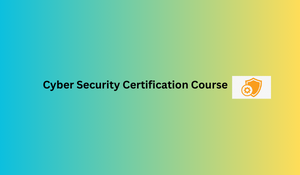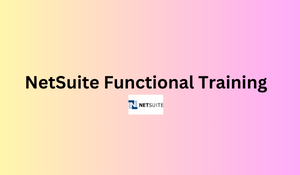Cyber Security Certification Interview Questions and Answers – 2024 Cyber Security Certification Course
What is cybersecurity?
Cybersecurity involves protecting computer systems, networks, and data from unauthorized access, attacks, and damage. It contains measures such as firewalls, encryption, and antivirus software to establish the confidentiality, integrity, and availability of digital information and infrastructure.
Explain the CIA Triad.
The CIA Triad is a foundational concept in cybersecurity, representing the three core principles of information security: Confidentiality (ensuring data privacy), Integrity (maintaining data accuracy and consistency), and Availability (ensuring timely and reliable access to information and resources).
Describe the difference between a firewall and an intrusion detection system.
A firewall acts as a barrier between a private network and external threats, controlling incoming and outgoing traffic based on predefined rules. An Intrusion Detection System (IDS) monitors network or system activities, identifying and responding to suspicious behavior. While a firewall prevents unauthorized access, an IDS detects and alerts on potential security incidents.
What is a VPN, and how does it enhance security?
A VPN is a secure connection that encrypts data published between a user’s device and a remote server, masking the user’s IP address. This enhances security by protecting data from potential eavesdropping, ensuring confidentiality, and enabling secure access to private networks over the internet.
Explain the role of SSL/TLS in securing communications.
SSL/TLS (Secure Sockets Layer/Transport Layer Security) protocols encrypt data transmitted between a user’s web browser and a server, ensuring secure communication over the internet. This cryptography vsafeguards sensitive information, such as login credentials and financial transactions, protecting against eavesdropping and data tampering.
How do you secure a Linux/Unix system?
To secure a Linux/Unix system, practices include regular system updates, using strong passwords, configuring firewalls, definitive user privileges, employing intrusion detection systems, and monitoring logs for suspicious activities.
What is the principle of least privilege, and why is it important?
The principle of least privilege dictates that individuals or systems should have the minimum level of access or permissions necessary to perform their tasks. This limits potential damage from accidental or intentional misuse, enhancing overall security by reducing attack surfaces.
What is symmetric and asymmetric encryption?
Symmetric encryption uses a single key for both encryption and decryption, fast but requiring secure key distribution. Asymmetric encryption employs a pair of keys (public and private) for encryption and decryption, providing secure communication without the need for pre-shared keys, but it’s computationally intensive.
How does a digital signature work?
A digital signature uses asymmetric cryptography. The sender uses their private key to sign a message, and the recipient uses the sender’s public key to confirm the signature, ensuring message authenticity.
Explain the importance of key management in cryptography.
Key management in cryptography is crucial for maintaining the security of encrypted data. It involves generating, storing, distributing, and revoking cryptographic keys. Proper key management ensures the confidentiality and integrity of information by safeguarding the keys that control access to encrypted content.
Describe the process of session hijacking and how to prevent it.
Session hijacking involves unauthorized interception of a user’s session data. To prevent it, use secure protocols (HTTPS), employ strong session tokens, regularly update and monitor systems, and implement measures like two-factor authentication to enhance overall security.
Explain Cross-Site Scripting (XSS) and Cross-Site Request Forgery (CSRF).
Cross-Site Scripting (XSS) involves injecting malicious scripts into web pages, which can then be executed by users’ browsers. Cross-Site Request Forgery (CSRF) tricks users into unintended actions on websites where they are authenticated, often through manipulated or maliciously crafted requests.
What steps would you take in response to a security incident?
In response to a security incident, take immediate action to contain the breach, isolate affected systems, and preserve evidence. inform relevant stakeholders and authorities. Conduct a thorough investigation to determine the extent of the incident. Implement remediation measures, update security controls, and communicate transparently with affected parties.
Explain the concept of a Security Information and Event Management (SIEM) system.
A Security Information and Event Management (SIEM) system aggregates and analyzes log data from various sources across an organization’s IT infrastructure. It gives real-time monitoring, correlation of events, and alerts to identify and respond to security threats effectively.
Define ethical hacking and its importance in cybersecurity.
Ethical hacking, or penetration testing, involves authorized individuals undertaking to exploit vulnerabilities in computer systems to identify and fix security weaknesses. It is crucial in cybersecurity to proactively strengthen defenses and prevent malicious hacking attempts.
What is the importance of compliance in cybersecurity?
Compliance in cybersecurity determines adherence to legal, and industry standards. It helps protect sensitive information, fosters trust, and mitigates legal risks. Meeting compliance requirements is essential for maintaining a robust and secure organizational infrastructure.
Explain the role of regulatory standards such as GDPR or HIPAA.
Regulatory standards like GDPR and HIPAA establish rules for handling personal and sensitive data, ensuring privacy and security. Compliance with these standards is mandatory, protecting individuals’ rights and maintaining trust in the handling of personal information.
Describe the concept of a DMZ (Demilitarized Zone) in network security.
A DMZ is a network segment that separates an organization’s internal network from the external, untrusted network (usually the internet). It hosts services like web servers, acting as a buffer zone to enhance security by isolating and monitoring potentially vulnerable systems.











